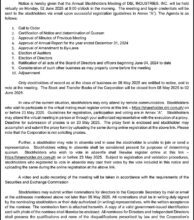A willingness to compete

For many Philippine tennis fans, nothing matches the recent run of Alexandra “Alex” Eala. In the span of a few weeks, she has gone from the mid-100s of women’s tennis rankings (already a feat in itself) to world number 72 by defeating former 2017 French Open champion Jelena Ostapenko, 2025 Australian Open champion Madison Keys and multi-Grand Slam winner Iga Swiatek at the Miami Open in March.
Never has a Filipino reached that level or defeated several top-ranked players in the Open Era, which started in 1968. I started watching tennis in the 1970s, through grainy and often time-delayed broadcasts of the Grand Slams. Bjorn Borg, with his uncannily low pulse rate, vs. the mercurial John McEnroe was a favorite match-up. I marveled at Steffi Graff’s still unmatched calendar Grand Slam, and the unrelenting pressure that Venus Williams put on an opponent. Countless days through law school in the 1990s were spent under the hot sun in Quezon City or Greenhills, wherever a tennis court could be found, with my friends Henry, Aza, and Alvin without the luxury of a ball kid and wondering whether the ball had lost enough of its fibrous felt to be unplayable. While working at my desk in New York in the late 2000s, I sat opposite an Australian, now a member of parliament in his country, who was once ranked 183 in the world, and he described to me how life on the tour can be difficult for lower-ranked players.
This is why Eala’s wins are exciting to Filipino tennis fans — to finally have a countrywoman to cheer for with every down-the-line forehand or groan with every sprayed shot against some of the world’s top players, even at the unholiest of Philippine broadcast hours. The best tennis matches are gladiatorial one-on-one matches, with the best players painstakingly constructing points, i.e., setting up their opponents into more and more difficult positions to return the next shot. There are no teammates to blame and while the occasional umpire or linesperson (or electronic line judge) may make an error, the focus is on the two players on the court.
Tennis, along with golf, is one of the spectator-friendly sports where regular global competition is truly possible, with consistently high-level matches being held in accessible venues and with regular mainstream coverage. There are multiple tournaments throughout the year to follow, where the grand slam events are interspersed with mid-level tournaments; the defeat of a favorite player is difficult to watch but, health allowing, the next tournament is just around the corner.
The initial narrative of sports commentators is that Eala left the Philippines when she was 13 to enter the Nadal academy in Spain. It highlights that to become competitive in this sport, training and competition abroad are essential; golfer Bianca Pagdanganan is another athlete who left the country in a similar vein. Our Olympic champions and competitors also followed similar paths.
It holds a lesson for our country as well. To truly prosper and become world-beaters our companies must be willing to compete, whether here or abroad. Protection may create local winners, but that can only grow so far, because the size of our domestic market is limited.
Eventually, protected firms will have the incentive to maneuver politically to perpetuate their local advantages through favorable regulation that hamstrings foreign competition. These economic distortions lead to broader societal distortions as well, as the politicians become accustomed to working with their domestic economic patrons, which worsens corruption. Narratives are manufactured that foreign competition is unabashedly injurious to Filipinos, which then leads to more protections that wall off other parts of the economy. Consumers suffer because they pay higher prices for goods, with some of the profits being used by the local player for the political patronage that benefits them, not the buyer of the product. In the end, the consumer is worse off both economically and socially.
Admittedly, there is always a need to consider the domestic social effects of competition, and to implement measures that, for a limited time, help those who need to adjust to it — such as farmers who may need help staying competitive, or assisting them in transitioning to other crops that are more profitable or have larger markets. After all, while the market may solve supply-and-demand issues, and help consumers have access to better products at reasonable prices, it can still have negative effects on local firms and workers and helping them adjust is the other side of building competitive economies.
Reasonable environmental protection is also another priority in free markets; economic efficiency at the cost of our ecological well-being or that of our children is a dangerous tradeoff. This is where we also have some failings and which many free-market advocates fail to recognize, and which is why the domestic lobby for continued protection is still strong. While we must work to make markets and firms better through competition, we must also work just as hard to help mitigate the economic and social problems that it generates. Competition legislation must also be implemented faithfully.
The next few years will be important to the global trading system. There will be calls for more protection as countries try to insulate their industries and protect local jobs. But Asia has prospered through trade, and our workers benefit from more open borders, not closed ones. Firms that are competitive globally help the overall economy as technologies, skills, and competencies propagate and are transferred to other firms that they work for, and the result is more competitive firms and workers broadly across sectors and industries. As a geopolitical price taker, we must work with other countries to keep the wheels of trade spinning.
Alex Eala could have stayed here and she would very likely have prospered as the best tennis player in the country. Since we do not have significant international tournaments, she would have dominated the local scene and maybe even competed well at the Southeast Asian or Asian games. But by going abroad despite the separation from the family and the punishing schedule, she has widened her horizons. Was it Andre Agassi who recounted in his memoirs waking up unable to move with a painful back and barely recognizing which city he was in, as a price paid for being a champion?
Eala is still only turning 20 and, health allowing, has many, many more years of competition. On the internet, it is easy to spot the crabs who claim she has won nothing of note and claim that she is the product of hype after a lucky run in Miami. They, of course, do not understand that Filipino tennis fans have finally found one of their own to root for at this level of tennis, and are unabashedly excited about it. Undoubtedly, many more tennis rackets are going to be picked up in the next few years, and some may even start to make it abroad. It inspires others to do as well, and to become better — a lesson worth emphasizing today to our policymakers and locally bound firms.
Bob Herrera-Lim is a managing director at Teneo, a New-York based consulting firm that advises companies and investors globally. He covers all of Southeast Asia for the firm’s clients. He is also a fellow of the Foundation for Economic Freedom.




